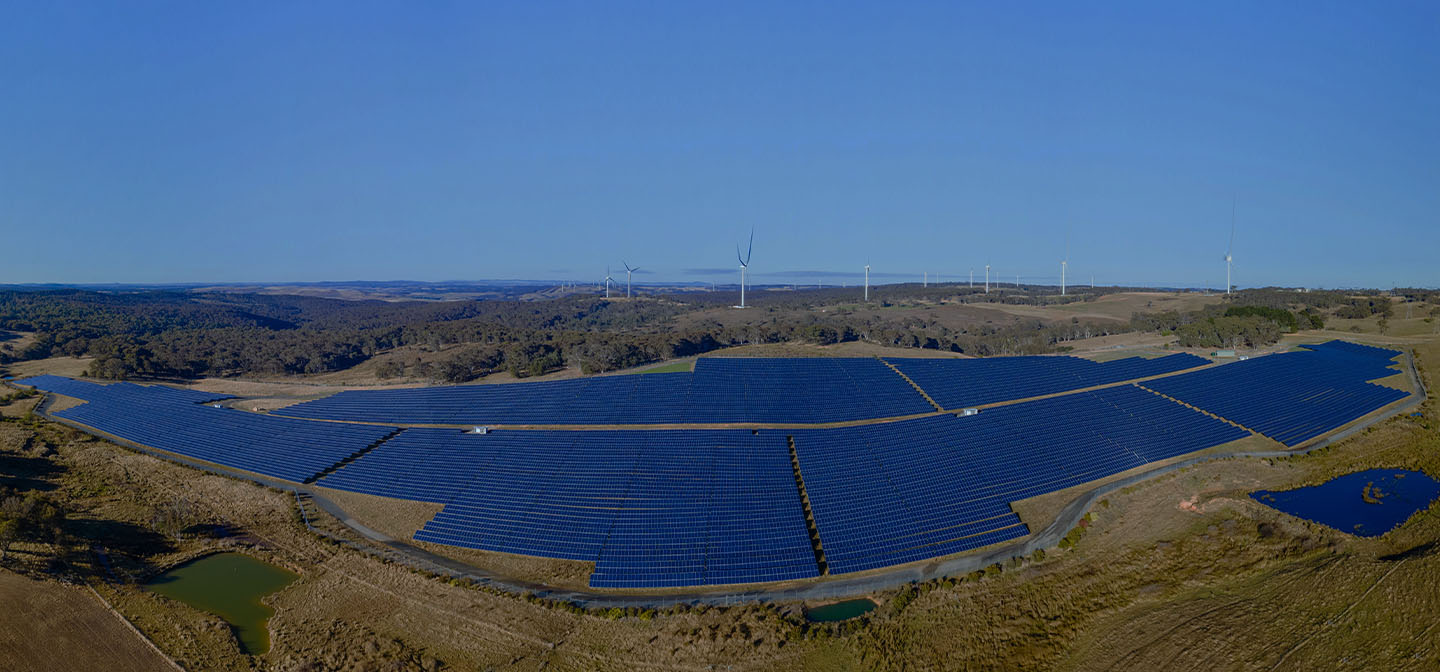
Australia’s journey to becoming a global leader in residential solar energy is a testament to its solar energy pioneers’ vision, innovation, and determination.
Australian research has been instrumental in making solar panels affordable and efficient. The modern solar panel, effectively invented by Dr Martin Green and his team at the University of New South Wales, has dominated efficiency records for decades.
The invention of the Passivated Emitter and Rear Contact (PERC) technology and continuous advancements in solar cell efficiency have transformed the global solar industry.
Moreover, Green’s influence extended beyond technological innovation. Many of his research students went on to lead major solar companies, significantly reducing the cost of solar panels.
Without the contributions of Australian researchers, the widespread adoption of low-cost, high-performance solar panels might not have been possible.
Professor Green’s mentorship and groundbreaking research have earned him numerous accolades, including the prestigious Japan Prize.
His work, alongside that of his students, has driven technological advancements and positioned Australia as a critical player in the global renewable energy landscape.
Australia’s solar energy journey is a remarkable story of innovation, perseverance, and global impact.
These pioneers’ contributions have transformed Australia’s energy landscape and set the stage for a sustainable future powered by the sun.
As we will discover later in this blog post, Prime Minister Anthony Albanese’s government has launched a scheme to reignite Australia’s solar panel manufacturing industry.
But first, let’s look at the history of solar and Australia’s contribution to the industry and field of research.

Early History of Solar Energy
1767 – The Creation of the First Solar Cell
The foundation of solar energy can be traced back to 1767 when the Swiss physicist Horace Bénédicte de Saussure created the first solar collector cell.
He designed an insulated box, similar to a greenhouse, with an opening and multiple layers of glass.
When exposed to direct sunlight, this device, known as the heliothermometer, could reach temperatures of 108 degrees Celsius, enough to boil water and cook food.
This invention laid the groundwork for solar collectors developed in the 1800s and 1900s, eventually used to heat houses, supply hot water, and generate electricity.
1839 – The Discovery and Potential of the Photovoltaic Effect
At 19 years old, French scientist Edmund Becquerel discovered the photovoltaic effect while researching in his father’s lab.
He found that sunlight could increase electricity generation using an electrolytic cell composed of two metal electrodes placed in a conductive solution.
This milestone in the history of solar energy inspired future innovations.
1883 – The First Solar Cells
In 1883, Charles Fritts designed the first solar cells made from selenium wafers, building on Willoughby Smith, William Grylls Adams, and Richard Evans Day’s discoveries of selenium’s photoconductive properties.
Fritts’ solar cells had an efficiency of about one per cent. Still, they demonstrated that solid material could create electricity from sunlight.
1940 – From Selenium to Silicon Solar Cells
The next breakthrough came in 1940 with Russell Shoemaker Ohl, a semiconductor researcher at Bell Labs.
Ohl discovered that a silicon sample with a crack in the middle could generate a current when exposed to light, forming a p-n junction.
This discovery was crucial for developing modern silicon solar cells.
Ohl patented the modern junction semiconductor solar cell in 1946, establishing the basis for the solar technology we use today.
Solar Hot Water and Early Research in Australia
1941 – The First Domestic Solar Water Heater
The first recorded Australian domestic solar hot water heater was built by CSRI’s (now CSIRO) Roger Morse at Meringa Station near Cairns, Queensland.
With a collector area of 1.9 m² and a storage capacity of 180 litres, this system provided hot water for 300 days a year in the North Queensland climate.
1953 – Manufacturing of Solar Hot Water Systems
In 1953, S. W. Hart and Co. Ltd. began manufacturing Solahart hot water systems in Perth, Western Australia.
Utilising the thermosiphon principle, these systems became a household name and laid the foundation for Australia’s solar hot water industry.
1955 – Solar Research Begins
Roger Morse and his team at the Commonwealth Scientific and Industrial Organisation (CSIRO) began their pivotal work on solar thermal systems in 1955.
Their research established Australia as a significant player in solar hot water system manufacturing and exportation.
1962 – The Earliest Solar Organisation
The inaugural meeting of the Australia New Zealand Branch of AFASE (Association For Applied Solar Energy) was held in August 1962, with Roger Morse elected as chairman.
This organisation, later known as ANZSES (Australia New Zealand Solar Energy Society), was critical in promoting solar research and development.
1970 – The First International Solar Energy Congress
In June 1970, ANZSES hosted the world’s first international solar energy congress in Melbourne, featuring 152 participants and 83 papers.
This event marked Australia’s commitment to solar energy research and global collaboration.
The Birth of the Solar Photovoltaic Industry
1974 – Stand-Alone Solar PV Systems
Solar PV panels were first used by Telecom (now Telstra) in 1974 to power remote telecommunication systems. These early applications demonstrated the viability of solar PV for commercial and industrial use despite high costs.
1976—The Alternative Technology Movement Begins
The energy crisis of the 1970s spurred the formation of the Alternative Technology Association (ATA), now ReNew, which advocates for sustainable living and green energy technologies.
1978—Passive Solar Building Design
The Solar Q1 house in Greenmount, WA, opened for display in 1978.
It featured an innovative passive solar design and was among the first to incorporate wall insulation in brick cavity walls in Australia.
1980 – Australia’s PV Manufacturing Industry
Tideland Energy and Solarex began manufacturing solar modules in the early 1980s, marking the start of Australia’s commercial solar cell production.
These companies were crucial in supplying solar panels for domestic and international markets.
1981 – The First Solar (Thermal) Power Station
White Cliffs Power Station in NSW, constructed in 1981, was Australia’s first commercial solar power station. Initially steam-powered, it later transitioned to photovoltaics and operated until 2005.
Inventions and Record-Breaking Achievements
1982 – First Transcontinental Solar Car Journey
Hans Tholstrup and Larry Perkins drove a solar-powered car dubbed The Quiet Achiever 4000 km from Perth to Sydney in 1982. This journey, completed in 20 days, was a landmark achievement in solar vehicle technology.
1983 – Invention of the Passivated Emitter and Rear Cell (PERC)
Professor Martin Green and his team at UNSW invented PERC technology in 1983, significantly improving solar cell efficiency.
The PERC (Passivated Emitter and Rear Cell) technology introduced a passivation layer on the rear side of the cell which reflects unabsorbed light into the cell, allowing for greater absorption and conversion of sunlight into electricity.
This innovation resulted in higher energy conversion efficiencies and reduced the cost per watt of solar panels.
Over the next two decades, Green’s team perfected this technology, which is now used in over 90% of solar panels manufactured globally.
1985 – Manufacturing Off-Grid Solar Inverters
Latronics began designing and manufacturing off-grid inverters for solar systems in 1985. Their inverters have been widely used in domestic and industrial applications globally.
1985 – Invention of the MPPT (Maximum Power Point Tracker)
Stuart Watkinson from AERL invented the world’s first MPPT in 1985, optimising the efficiency of solar power extraction.
Grid-Connected Solar PV
1993 – Australia’s First Grid-Connected Solar/Wind PV System
Project Aurora, established in 1993, was Australia’s first community solar farm and grid-connected solar/wind system.
This project paved the way for future grid-connected solar installations.
1994 – First Residential Grid-Connected Solar PV System
Peter Fries’ home in Mt Coolum, Queensland, became the first documented residential PV solar system connected to the Australian power grid in 1994.
This project led to the development of energy buy-back policies and demonstrated the feasibility of residential grid-connected solar.
1998—The Genesis of Australian Standards for Grid-Connect Solar
In 1998, UNSW developed grid-connect guidelines for PV, which led to the publication of the Australian Standard AS4777.
This standard has been instrumental in safely and efficiently installing over 3 million rooftop solar systems in Australia.
Continuing Innovation and Global Impact
2001 – Pioneering Solar Research Continues
Under the leadership of Professor Martin Green, the University of New South Wales (UNSW) continued to push the boundaries of solar technology.
Green’s research team achieved record-breaking efficiency levels in solar cells, with their advancements laying the groundwork for today’s highly efficient solar panels.
2009 – The Solar Flagships Program
The Australian Government launched the Solar Flagships Program in 2009, aiming to support the construction of large-scale solar power stations. This initiative attracted significant investment and accelerated the deployment of utility-scale solar projects nationwide.
2010—The Emergence of Suntech and Sunman Energy
Professor Green’s former student, Dr. Shi Zhengrong, founded Suntech Power, which became one of the world’s largest producers of solar panels.
Later, he established Sunman Energy, known for producing lightweight, flexible solar panels and further revolutionising the solar industry.
2013 – Australia’s First Solar-Integrated Airport
Alice Springs Airport became the first in Australia to integrate solar power into its operations.
The 1 MW solar plant provided a significant portion of the airport’s energy needs, showcasing the potential for solar energy in commercial applications.
2015 – Breaking Efficiency Records
UNSW researchers, led by Martin Green, set a new world record by converting sunlight into electricity with an efficiency of 40% under normal conditions.
This breakthrough demonstrated the potential for even greater efficiencies in the future.
2017 – Tesla’s Hornsdale Power Reserve
In South Australia, Tesla’s Hornsdale Power Reserve, the world’s largest lithium-ion battery, was connected to the grid.
This project underscored Australia’s leadership in integrating renewable energy with advanced storage solutions.
2018 – The Australian Renewable Energy Agency (ARENA)
ARENA has been pivotal in funding innovative solar projects, including developing advanced solar thermal technologies and hybrid solar-wind systems.
These projects highlighted Australia’s commitment to diversifying its renewable energy portfolio.
2020 – Record Low Solar Costs
The cost of rooftop solar installations in Australia plummeted to unprecedented lows. According to the SolarQuotes Australian Solar Price Index, the cost per watt dropped from around $15 before 2008 to approximately 95 cents in 2021, to less than 50 cents in 2024, making solar power more accessible than ever.
The Current Government’s Boost to Local Solar Panel Manufacturing
2024 – The Solar Sunshot Initiative
Prime Minister Anthony Albanese has announced the $1 billion Solar Sunshot subsidies and grants scheme to establish Australia’s domestic solar supply chain.
This initiative aims to ensure that Australia does not remain the final link in a global supply chain based solely on Australian innovation.
The announcement came after the initial findings of the groundbreaking $1.2 million Silicon to Solar Study, published in February.
The study serves as a roadmap for establishing Australia’s solar industry.
Mr Albanese emphasised the significance of this announcement during a speech at the recently shuttered Liddell coal-fired power station, which AGL Energy and SunDrive hope to turn into a solar manufacturing plant.
A Future Made in Australia
“I want a future made in Australia. I want a future made in our regions. Places like the Hunter, which have powered our nation for over a century, will power our future,” said the Prime Minister.
He highlighted Australia’s abundance of metals and critical minerals necessary for net-zero transformation.
He then committed to enhancing the value capture for the economy and workforce.
Federal Government’s Commitment
Mr Albanese stated that the Australian Renewable Energy Agency (ARENA) will consult with industry and the government to design and deliver the Solar Sunshot program and funding.
ARENA will focus on the entire supply chain, from ingots and wafers to cells, module assembly, and related components, including solar glass, inverters, advanced deployment technology, and solar innovation.
Job Creation and Economic Opportunities
Federal Energy Minister Chris Bowen emphasised that the $1 billion in funding would create Australian jobs and help manufacture crucial technology for the shift to net zero.
“We know that the world’s climate emergency is Australia’s job opportunity… $1 billion to support Australian manufacturing in solar technology will help seize that opportunity,” he said.
State Government Initiatives
Alongside the federal government announcement, NSW Energy Minister Penny Sharpe announced that the state Labor government will deliver its own Net Zero Manufacturing Initiative, with a $275 million first round now open.
A second round will work with the industry to leverage government procurement to offer off-take agreements to local manufacturers of renewable products and low-carbon materials.
Australia’s rich history of solar energy innovation and adoption is a testament to the visionaries and pioneers who have driven this industry forward.
From early solar hot water systems to cutting-edge PV technology, Australia has continually pushed the boundaries of what is possible with solar energy.
Solar energy brings several advantages to businesses such as cost reduction, environmental sustainability, energy independence, access to certain government incentives, improved brand image, and employee satisfaction, among others – which is why integrating solar should be on the checklist for commercial and industrial electricity users in Australia.
If you’re interested in making solar a part of your business’ energy plan, or you want to reduce your company’s electricity or natural gas costs, we can help you explore the best offers and opportunities for your business. Get started here – fill in our form to set up an obligation-free consultation.
You may also call 1300-852-770 or send us an email at info@leadingedgeenergy.com.au.
We source, analyse, compare and rank commercial, industrial and multisite energy quotes. Obligation Free.
Chat with one of our experienced consultants today and get the insights your business needs to help manage the risks associated with volatile electricity and natural gas markets. Our energy procurement service is obligation-free and provides a time-saving way of securing lower energy rates from our panel of energy retailers.

Get advice from our Energy Management Consultants

Krystle Will
Energy Management Consultant
Get in Touch
Feel free to call or e-mail us. Or just fill in the form below and we’ll contact you for an obligation-free discussion.
Are you ready to save on business energy costs?
Get Started
Leading Edge Energy is proud to be a signatory of the National Customer Code for Energy Brokers, Consultants and Retailers.